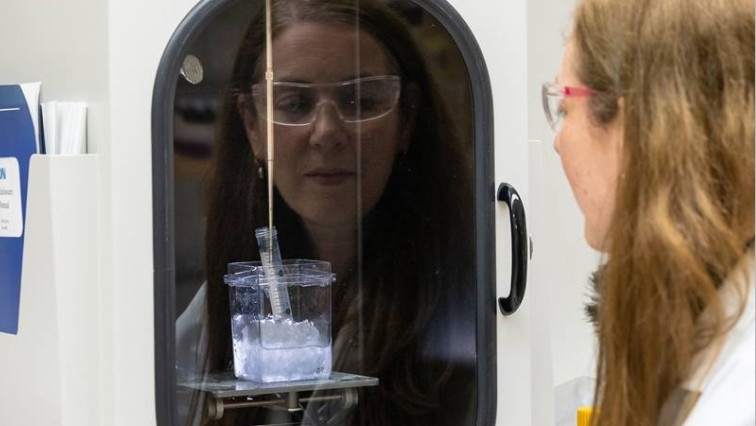The Science
Being able to deliver drugs directly to diseased cells would improve options for treating diseases. Some radioactive isotopes are already approved to target cancers. When these isotopes change from one isotope to another during the treatment process (for example, through radioactive decay), they emit large amounts of energy. This makes it hard to keep them in place near diseased cells or other targets. Researchers are now testing a way to enclose isotopes in tiny pieces of biodegradable material that will keep the isotopes at treatment sites. This ensures that their energy can kill cancer cells or other targets with little effect on surrounding cells. In this study, researchers show that these polymers successfully contained similar but non-radioactive metal atoms. This is an important step in using these polymers to deliver medical isotopes.
The Impact
Scientists have previously shown that enclosing drugs in tiny particles of a certain polymer called poly (lactic-co glycolic acid), or PLGA, can
keep the drugs at particular cells in the body. Scientists theorize that radioactive medical isotopes enclosed in PLGAs should do the same. PLGA is also compatible with the human body. This reduces the risk of the body rejecting these materials. PLGA also degrades over time, then leaves the body. These factors make PLGA an excellent potential tool for delivering radioisotope treatments that deserves future study.
Summary
Some alpha-emitting radioisotopes approved for cancer treatment are “self-targeted.” One example is the bone cancer treatment radium-223, which behaves like calcium when delivered to bones. However, it can be difficult to target radium-223 to a different kind of tumor site. None of the standard ways to attach radium-223 to targeting molecules work. That’s why scientists are trying to capture the radium-223 for delivery within molecule-size nanoparticles of PLGA and other materials. Nanoparticles can potentially prevent the isotopes that form as radium-223 decays from breaking away from the targeted sites.
Further research will show whether encapsulating radioisotopes that emit alpha radiation can solve this delivery challenge. Tests of PLGA with surrogate metal ions show promise because the surface of PLGA can be adjusted to allow for targeting specific types of cancer cells. The tests also show promise because PLGA retains surrogate versions of radioactive isotopes, indicating that they can be captured within these types of nanoparticles. PLGA is already used to encapsulate and release other types of organic compounds, so the research, if it can be replicated with radioisotopes, could lead the way to PLGA’s use with anticancer agents. Researchers used comparable, non-radioactive, metal ions as a stand-in for radioisotopes to provide evidence that the concept is sound and to reduce the handling and disposal of radioactive material.
Read the original article on U.S. Department of Energy (DOE).







